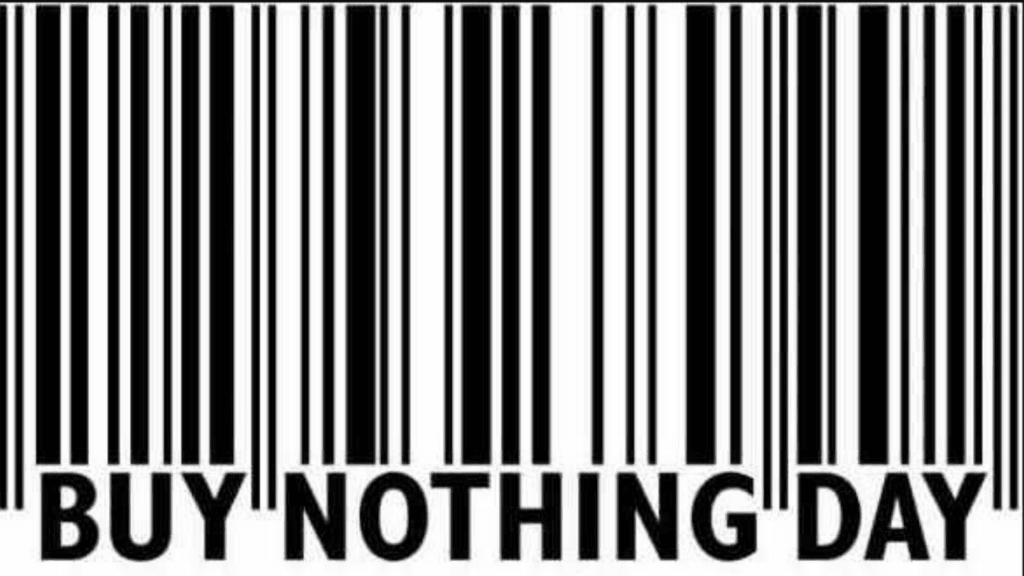It’s becoming harder and harder to avoid ads about Black Friday, but at FTA we’re on a mission to accelerate conscious consumerism, so we remain focused on supporting and promoting Buy Nothing Day!
The first Buy Nothing Day was organized in Canada in September 1992 “as a day for society to examine the issue of overconsumption”. While it has since become an international day of protest against consumerism, it was strategically aligned with Black Friday, one of the ten busiest shopping days in the United States *, and the launch of the Christmas shopping season.
This year’s Black Friday shopping experience will be different as a result of Covid-19, but the impacts will be the same, or possibly worse, as people shop online to avoid crowds leading to increased packaging waste and greenhouse gas emissions from shipping; and then inevitably from returns which very often end up in landfill (as documented in this CBC Marketplace expose on tracking Amazon returns).
But in any form, be it online or bricks-and-mortar, this shopping tradition, originally contrived by retailers, essentially supports overproduction, and in turn promotes overconsumption. When we buy into the seemingly good deals, we send a message to brands that it’s okay for them to thoughtlessly produce at the cost of people and the planet as we help them get rid of their stockpiles as long as they are steeply discounted.
Whether through our own programs (like our educational workshops, including our REwear virtual clothing challenge), WEAR conference and webinar series or by promoting global allies who support circularity in the fashion industry, FTA’s message remains consistent: we must all, as consumers, adjust our consumption and disposability habits to reduce our collective fashion footprint.
So what can you do?
To start, avoid shopping on Black Friday to protest deep discounts and overproduction. You can learn more through Fashion Revolution’s Black Friday campaign and you might consider taking the Buy Nothing Pledge. You can also help by spreading the word to your network and encourage them to do the same. We’d also love you to follow FTA’s posts about Buy Nothing Day on Instagram or Facebook (if you don’t already).
Overall, we know you can’t stop consuming completely, but you can become a more conscious consumer – throughout the holiday shopping season and all year-round – by:
- Shopping Local
- Shopping Less
- Shopping Secondhand
- Shopping Sustainable + Ethical Brands
Have you ever used ThredUp’s Fashion Footprint Calculator to see what kind of impact you’re having? Taking this survey is a great first step in learning about, and finding ways to reduce, your fashion footprint. And while you’re at it, have you taken the 7R’s of Fashion Pledge?
So, this Black Friday, keep in mind that we are all consuming more and wearing items for shorter periods of time than ever before, so try to resist the lure of that super cute, heavily discounted sweater that keeps popping up in your feed. It’s vital that instead of buying another pair of jeans for instance (which have a particularly hefty environmental impact), that we find different ways of replenishing our need for new. What about thrifting or if it’s denim you need, shop via the newly launched Levis Secondhand? Or simply tweak the things you already have in an effort to refresh your look? We get that trends change, so if you are going to replace your denim, or anything else for that matter, check out Good on You to find ethical and sustainable options – just don’t do it on Buy Nothing Day!
Are you a student or educator?
Get your school involved in REwear, our virtual clothing challenge! By reducing your school’s fashion footprint, you will see measurable change in your local community. If interested email jennifer@fashiontakesaction.com


